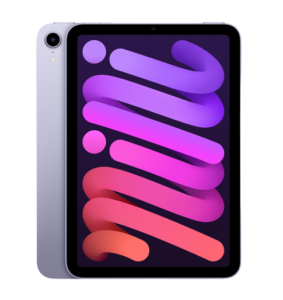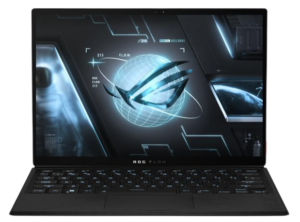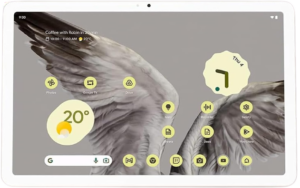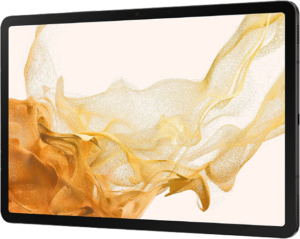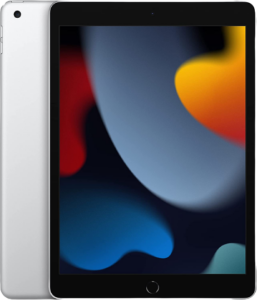Size isn't the only thing that matters when it comes to choosing the best tablet in 2024.
The best tablets you can buy in Australia
While the hype around tablets as the next big thing in personal computing has largely settled down, the category remains in a pretty vibrant place. For many consumers, tablets haven't quite replaced the traditional laptop. However, they remain an indispensible device for things that are a little too big for modern smartphones to handle.
If you're in the market for a new tablet in 2024, we've put together a shortlist of the best options.
Why we like it: It might be an overstatement to suggest that Apple invented the tablet, but it's fair to say that they made it mainstream in a way that earlier efforts can't come close to matching. The latest iPad Pro pushes the potential of Apples's take on the tablet to the max, thanks to the same M4 processor seen in recent refreshes of the MacBook and MacBook Air.
For what it's worth, we'd favor the 11-inch model unless you're seriously looking at using it as a full-time laptop replacement. The smaller model still has all the same features, from 5G connectivity to Face ID. It's a little more versatile when it comes to working as both a content creation and consumption device.

The best laptops you can buy in 2024
If you’re looking to buy a new laptop in 2024, these machines represent the cream of the crop.
Why we like it: While the performance and lower price seen in the standard Apple iPad are likely to tempt budget buyers, those who can afford to spend the extra $100 and pick up the iPad Mini instead are likely to find its well worth the upgrade.
Updated in 2021, the new iPad Mini features a gorgeous 8.3-inch Liquid Retina display and comes powered by the same A15 Bionic processor found in the iPhone 13. It's also got a significantly more modern design, incorporating a USB Type-C port rather than Apple's own Lightning cable, support for the second generation Apple Pencil and 5G connectivity.
Even if it's not the absolute cheapest tablet, the new iPad Mini sets a new high bar for cheap tablets to aspire towards.
Why we like it: The flagship Microsoft Surface Pro 11 isn’t necessarily going to be the most powerful 2-in-1 PC that Microsoft makes, nor is it the most portable. However, if you're a fan of the hybrid form-factor, it’s hard to beat.
The new Surface Pro comes in one 13-inch size with up to 32GB of RAM and up to 1TB of SSD storage. The tablet is available with either an LCD or OLED display and the option of 5G connectivity. As usual, the design is one of the Surface Pro 11's biggest assets. the Surface aesthetic is nice to look at and the iconic kickstand keeps things practical in almost any kind of work environment.
Where the Microsoft Surface Pro 11 differs from the previous models is that it runs on Snapdragon's new ARM processors. This isn't Microsoft's first go-around with alternatives to the traditional x86 architecture but the early results seem more promising than its previous efforts.
Even if that screen is a little smaller than the average 2-in-1 laptop, the portability and performance here leave the Surface Pro 11 looking like a good option. Thanks to the ever-reliable kickstand and a notable spec bump, the latest addition to the Surface Pro line continues to set the bar for detachable 2-in-1 PC experiences.
Why we like it: The price-tag is hard to miss, but if you're after the best and brightest that the Android tablet scene has to offer, then the Samsung Galaxy Tab S9 Ultra takes away the top prize. The hardware here is solid, and the software does a good job of covering for the usual shortcomings and downsides that come into play with Google's answer to iPadOS.
Those who want an Android tablet solely for content consumption can probably save a few hundred bucks by opting for one of the many cheap Lenovo tablets out there or the Galaxy Tab S9 FE, but those who want an Android tablet capable of competing with the iPad Pro or a traditional laptop will likely find a lot of value in the big screen experience available here.
Why we like it: ASUS' ROG Flow Z13 refines their earlier forays into gaming tablets and delivers on the promise of something that's as powerful as it is compact. Even if it's saddled with a price that leaves it out of the reach of all but early investors, there's a lot to like about the results that the hardware inside this tablet achieves.
While you don't get the Switch-style handheld experience offered by the likes of the Steam Deck or Steam Deck OLED, the ROG Flow Z13 still offers a compelling alternative take on what a portable PC can look like.
Tablets we also considered
Pixel Tablet
Google's first foray into Pixel-branded tablets has some neat ideas and a clever gimmick but rarely manages to be more than the sum of its parts. It's a good option for those who want to flesh out their Google Home experience but it's too expensive to compete with cheaper content consumption devices and it doesn't have the right parts to pick a fight with the likes of the Galaxy Tab S9 Ultra.
Samsung Galaxy Tab S8
The Galaxy Tab S8 is more modest than it's pro-grade counterparts, but it's also significantly more affordable. If you're looking for a high-performance Android tablet, but don't quite need something as big, ambitious or geared to replace your laptop as the Samsung Galaxy Tab S8 Ultra, then the standard model will likely serve almost just as well.
Apple iPad (9th Gen)
If you stretching your budget to $499 is a bridge too far, then the compromises of the standard iPad are something you might be willing to live with. You're getting a significantly older design that looks out-of-date by modern standards. Fortunately, the cheapest iPad available comes armed with a processor that's most powerful than the most Android devices plus all the usual perks that come with iPadOS.
What to consider when buying a tablet
Operating System
If you're in the lucky position where your workflow can fit inside the software limitations that come with either an Android-based tablet like the Samsung Galaxy Tab S9 Ultra or the iPad Pro, then the benefits to battery life and versatility are well worth considering. On the other hand, if you do still need to have access to apps that are only available on Windows, then something like the Microsoft Surface range is going to be the place to start.
Screen size
Beyond software, the next big thing that tablet buyers should consider is screen size. If you're looking at any sort of multitasking, you'll want the biggest tablet you can find. However, if you're just looking to play some games, browse the web or read some eBooks then a lighter form-factor is the way to go.
Storage
After software and screen, storage is the next thing to consider. One of the disadvantages that tablets have versus traditional laptops is that they can't be upgraded later down the line.
Unless the tablet in question has a MicroSD slot or you're relying on cloud storage, what you start with is all you'll get. So choose carefully.
Accessories
Last but not least, tablet buyers should definitely do their research when it comes to accessories. The cost of kitting out your new tablet with a keyboard or stylus can vary wildly depending on the brand, not only when it comes to cost but also quality and overall functionality.
Tablet FAQs
What are the main uses of tablets?
Tablets are typically used to consume content on the go, be it via a web browser, social media app or video platform like Netflix. However, much like laptops, tablets are portable computers that can be used for all sorts of tasks. The full list here includes everything from digital art creation to video editing and more.
Can I use a tablet as a phone?
Whether you can use a tablet as a phone depends on the brand involved.
While Apple's iPadOS-based tablets do support mobile connectivity, they typically only support cellular connectivity when it comes to data. In contrast, some Android-based tablets like the Samsung Galaxy Tab S8 do support calls and texts. See 5G tablets.
Do tablets have SIM cards?
Many tablets are available in Wi-Fi and cellular (4G or 5G) variants. The latter usually have a SIM slot to support this feature that isn't found in the former.
Related Articles





